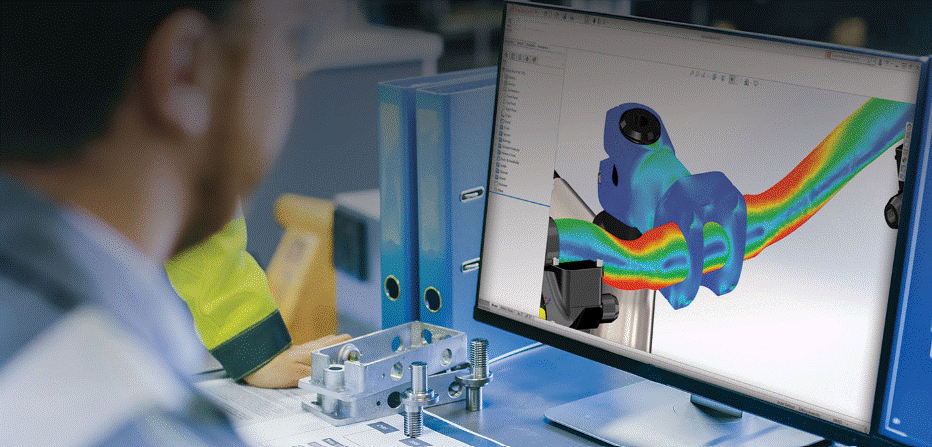In today’s fast-paced engineering and manufacturing landscape, the question isn’t whether simulation software is a luxury or a necessity—it’s how quickly you can integrate it into your processes to stay competitive. As industries evolve, the role of simulation software has become increasingly critical.

Let’s explore why this transformation is happening and why simulation software is no longer just a tool that’s “nice-to-have.”
Enhanced Product Performance & Reliability
Gone are the days when trial and error defined the product development process. With advanced simulation capabilities, companies can now predict product behavior under various conditions with remarkable accuracy. This leads to the development of more reliable and high-performing products, reducing the likelihood of costly failures and increasing customer satisfaction. The ability to foresee and mitigate issues before physical testing ensures that the final product meets, or even exceeds, performance expectations.
Reduced Physical Prototyping & Testing Costs
One of the most tangible benefits of simulation software is the significant reduction in the need for physical prototypes. By simulating real-world conditions digitally, companies can test their designs virtually, identifying flaws and optimizing performance without the high costs associated with physical prototypes. This not only saves on materials and labor but also speeds up the development process, allowing for faster time-to-market.
Improved Design Optimization
Design optimization is no longer a cumbersome process of guesswork and incremental adjustments. Simulation software provides engineers with powerful tools to explore a vast array of design options and pinpoint the most efficient and cost-effective solutions. This means products can be lighter, stronger, and more innovative, meeting or exceeding performance requirements without the trial-and-error traditionally associated with design refinement.
Streamlined Collaboration & Communication
Effective collaboration is the backbone of successful product development. Simulation software, particularly when integrated with other tools from suites like Dassault Systèmes, facilitates seamless communication among various teams—design, engineering, and manufacturing. This integrated approach ensures that everyone is aligned, reducing misunderstandings and enhancing overall project efficiency. The ability to share and visualize data in real-time accelerates decision-making and fosters a collaborative environment.
Enhanced Compliance & Risk Management
Meeting regulatory requirements and managing risks are crucial aspects of product development. Simulation software aids in this by providing precise simulations and analyses that help companies adhere to standards more effectively. Early identification and mitigation of potential risks ensure that the products are not only safe but also compliant with industry regulations. This proactive approach to risk management helps avoid costly recalls and legal issues.
Conclusion: A Necessity in Modern Engineering
The benefits of simulation software extend far beyond the scope of traditional product development methods. By enhancing product performance, reducing costs, improving design optimization, streamlining collaboration, and aiding in compliance and risk management, simulation software like SIMULIA has proven to be an indispensable tool in modern engineering.
As industries continue to innovate and the demand for high-quality, reliable products grows, the adoption of simulation software will undoubtedly become a critical factor in maintaining competitive advantage. For companies looking to stay ahead in the market, simulation software is not just a luxury tool, it’s a necessity.
Incorporate simulation into your development process today and watch as your product quality, development speed, and market success soar. The future of engineering lies in the digital realm, and simulation software is leading the charge.
Learn More Here
Share
Meet the Author

